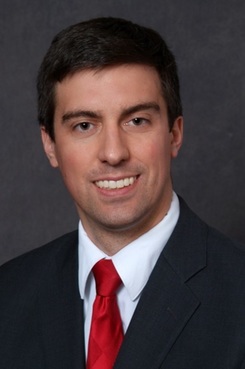Common Mistakes With Retirement Plans and Estate Planning
Do you have an estate plan? If not, you are not alone. Fewer than half of Americans have an estate plan—the percentage varies between 55 percent and 70 percent, depending on which survey you rely upon.
February 12, 2018 at 01:23 PM
4 minute read

Do you have an estate plan? If not, you are not alone. Fewer than half of Americans have an estate plan—the percentage varies between 55 percent and 70 percent, depending on which survey you rely upon. For those of you with an estate plan, there are mistakes that can be easily avoided. In this article, I will specifically address the issue of retirement plans and beneficiary designation forms.
Most people think that a will is the only document you need for an estate plan—not true! A will directs how your “probate assets” are distributed. Probate assets are assets that are owned solely by you (i.e., no joint owners) and have no beneficiaries named on the account. A retirement plan, such as a 401(k) or IRA, is not a probate asset. Your retirement plan is to be distributed in accordance with the beneficiary designation forms that you complete. It is possible for your will to direct your assets to be distributed to one person, and your beneficiary designation form to direct your retirement plan assets to a different person. Sometimes, this is intentional, and if so, generally done for purposes of minimizing tax consequences. However, many other times, this is a mistake that is overlooked and has unintended consequences.
Why is it important to complete the beneficiary designation form?
Control Who Inherits
Without a properly completed beneficiary designation form, the contractual provisions of your retirement plan will control who inherits your retirement assets. In most cases, the default beneficiary is your estate. However, other retirement plans may state that other persons directly inherit your retirement plan.
You have worked hard during your lifetime to save this money. You should be the one to decide who inherits the funds.
Protect the Funds From Your Creditors
If you intend for the same people to inherit both your probate assets and your retirement assets, it might seem easier simply to name your estate as the beneficiary of your retirement assets and allow all of the assets to be distributed in the same manner. Be warned—by doing so, you are putting your retirement assets at risk of your creditors.
Assume that you die with $100,000 of probate assets (bank accounts, equity in a house, vehicle) and $200,000 of retirement assets. Also assume that, upon your death, you have creditors (credit card companies, a nursing home and medical providers, or even a plaintiff in a lawsuit who obtained a judgment against you). Generally, those creditors can be paid only from your estate. So, if you owe more than $100,000, and if you properly completed your beneficiary designation forms for your retirement assets, those creditors can take only the $100,000 from your estate while your beneficiaries receive all $200,000 of your retirement assets. However, if your retirement assets are distributed to your estate, either because you named your estate on your beneficiary designation form, or your estate is considered the default beneficiary, then your creditors can also be paid from the retirement assets that become part of your estate, and your beneficiaries will not benefit from your hard work.
Protect the Funds From Your Beneficiary's Creditors
Many people are concerned about protecting beneficiaries from themselves and their creditors. For this reason, many people set up a trust to manage the funds for the benefit of the intended beneficiaries. For example, you could name a local trust company to manage the funds for the benefit of your children until each child reaches the age of 35.
A common mistake with this plan is to name the children instead of the trust on the beneficiary designation forms for the retirement plans. What is the result? Assume the previous situation where you have $100,000 of probate assets and $200,000 of retirement assets. If you establish a trust for your children under the age of 35, but name the children (rather than the trust) as beneficiary, you end up having $100,000 held in trust until they turn 35, and the other $200,000 going to them directly as early as age 18.
Having a will in place is a great start for an estate plan, but the planning should not stop there. Reach out to your lawyer to discuss the next steps, and make sure all of your beneficiary designation forms are completed properly.
Nicholas Nanovic, a member of Norris McLaughlin & Marcus, focuses his practice on estate planning and administration, taxation, and business law.
This content has been archived. It is available through our partners, LexisNexis® and Bloomberg Law.
To view this content, please continue to their sites.
Not a Lexis Subscriber?
Subscribe Now
Not a Bloomberg Law Subscriber?
Subscribe Now
NOT FOR REPRINT
© 2025 ALM Global, LLC, All Rights Reserved. Request academic re-use from www.copyright.com. All other uses, submit a request to [email protected]. For more information visit Asset & Logo Licensing.
You Might Like
View All
Deal Watch: Are Only 'A Handful' of Law Firms Positioned Well After Citi-Apollo Partnership?
5 minute read
With Lateral Market Heating Up, Emerging Companies Lawyers Bullish on Coming Months
5 minute read
Trending Stories
- 1Buyer Beware:Continuity of Coverage in Legal Malpractice Insurance
- 2‘Listen, Listen, Listen’: Some Practice Tips From Judges in the Oakland Federal Courthouse
- 3BCLP Joins Saudi Legal Market with Plans to Open Two Offices
- 4White & Case Crosses $4M in PEP, $3B in Revenue in 'Breakthrough Year'
- 5Thursday Newspaper
Who Got The Work
J. Brugh Lower of Gibbons has entered an appearance for industrial equipment supplier Devco Corporation in a pending trademark infringement lawsuit. The suit, accusing the defendant of selling knock-off Graco products, was filed Dec. 18 in New Jersey District Court by Rivkin Radler on behalf of Graco Inc. and Graco Minnesota. The case, assigned to U.S. District Judge Zahid N. Quraishi, is 3:24-cv-11294, Graco Inc. et al v. Devco Corporation.
Who Got The Work
Rebecca Maller-Stein and Kent A. Yalowitz of Arnold & Porter Kaye Scholer have entered their appearances for Hanaco Venture Capital and its executives, Lior Prosor and David Frankel, in a pending securities lawsuit. The action, filed on Dec. 24 in New York Southern District Court by Zell, Aron & Co. on behalf of Goldeneye Advisors, accuses the defendants of negligently and fraudulently managing the plaintiff's $1 million investment. The case, assigned to U.S. District Judge Vernon S. Broderick, is 1:24-cv-09918, Goldeneye Advisors, LLC v. Hanaco Venture Capital, Ltd. et al.
Who Got The Work
Attorneys from A&O Shearman has stepped in as defense counsel for Toronto-Dominion Bank and other defendants in a pending securities class action. The suit, filed Dec. 11 in New York Southern District Court by Bleichmar Fonti & Auld, accuses the defendants of concealing the bank's 'pervasive' deficiencies in regards to its compliance with the Bank Secrecy Act and the quality of its anti-money laundering controls. The case, assigned to U.S. District Judge Arun Subramanian, is 1:24-cv-09445, Gonzalez v. The Toronto-Dominion Bank et al.
Who Got The Work
Crown Castle International, a Pennsylvania company providing shared communications infrastructure, has turned to Luke D. Wolf of Gordon Rees Scully Mansukhani to fend off a pending breach-of-contract lawsuit. The court action, filed Nov. 25 in Michigan Eastern District Court by Hooper Hathaway PC on behalf of The Town Residences LLC, accuses Crown Castle of failing to transfer approximately $30,000 in utility payments from T-Mobile in breach of a roof-top lease and assignment agreement. The case, assigned to U.S. District Judge Susan K. Declercq, is 2:24-cv-13131, The Town Residences LLC v. T-Mobile US, Inc. et al.
Who Got The Work
Wilfred P. Coronato and Daniel M. Schwartz of McCarter & English have stepped in as defense counsel to Electrolux Home Products Inc. in a pending product liability lawsuit. The court action, filed Nov. 26 in New York Eastern District Court by Poulos Lopiccolo PC and Nagel Rice LLP on behalf of David Stern, alleges that the defendant's refrigerators’ drawers and shelving repeatedly break and fall apart within months after purchase. The case, assigned to U.S. District Judge Joan M. Azrack, is 2:24-cv-08204, Stern v. Electrolux Home Products, Inc.
Featured Firms
Law Offices of Gary Martin Hays & Associates, P.C.
(470) 294-1674
Law Offices of Mark E. Salomone
(857) 444-6468
Smith & Hassler
(713) 739-1250






